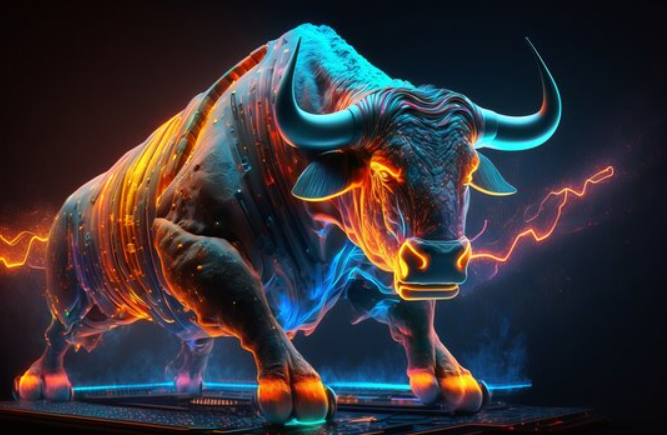Bull patterns and NYSE Advance/Decline Volume

In the fall of 2023, we received several buy signals in breadth indicators and sentiment data while we were facing a seasonally stronger period in Q4. Now we have once again received a buy signal in an indicator that I usually keep an extra eye on. However, I don't usually look at the indicator when the market is trending up.
What is a little different about this signal is that it usually occurs at bottoms. Not after a stock market rally. The last buy signal occurred in November 2023 after a correction in the fall.
For peaks and troughs, we use concentrating signals that signal a change in investor behavior.
The NYSE Advance/Decline Volume Ratio is an example of such an indicator.
NYSE Advance/Decline Volume Ratio
Advance/Decline Volume Ratio is a breadth indicator used to measure the strength and breadth of a market movement by comparing the volume of rising stocks (advances) to the volume of falling stocks (declines).
Calculating Advance/Decline Volume Ratio:
- Advance/Decline Volume Ratio = (Advancing Volume) / (Declining Volume)
- A ratio of 1 means that the volume of rising and falling stocks is equal.
- A ratio greater than 1 indicates that the volume of rising stocks exceeds the volume of falling stocks, indicating a stronger market.
- A ratio less than 1 indicates that the volume of falling stocks exceeds the volume of rising stocks, indicating a weaker market.
We take a 5-day average of this ratio and then use z-score to measure deviation from the average. A high level is a positive signal.
This type of signal is usually called Breadth Thrust.
Breadth Thrust according to ChatGPT:
Breadth Thrust is a technical indicator used in stock market analysis to measure the market's strength and potential for an upcoming upward trend. It is a momentum indicator that helps investors understand whether the market is about to transition from a downtrend or sideways trend to an upward trend.
Breadth Thrust is a useful tool for identifying changes in market momentum and the potential for an uptrend. It gives investors the opportunity to act on early signals of market strength.
As we can read above, it is an early signal to act on a reversal, which we did, for example, in the fall of 2023 when we received several buy signals.
Now we have received a signal after a stock market rally of almost two years.
However, this is not the first time the indicator has given a signal after an uptrend. It gave a buy signal in January 2018, which led to a mini “melt up” before the market turned down.
Requires login to the analysis platform to view graph.
Not a customer? Open an account to access our analytics service.
Bull market pattern S&P 500
The bull market in the US has been going on for 22 months.
This is shorter than the average and median, which are 53.5 and 59 months.
We rarely experience an average in reality, but comparing the development from a bottom with previous cycles at least gives us something to relate to.
Login is required to view statistics on previous bull markets.
Not a customer? Open an account to access our analytics service.
Maybe we have a “melt up” in the cards and then continue climbing. Of course, no one knows. We can only guess. However, building an investment strategy on guesses is not a good idea.
What I have learned is that it is easier to time bottoms than tops. Bottoms are often an “event” where we get a lot of buy signals, while tops can be more drawn-out processes.
We continue to follow the trend until the market gives us signals to the contrary.
Our trend rating is positive for the S&P 500 and OMXS30. You can find the trend rating on the home page.
Kind regards,
Erik Hansen

